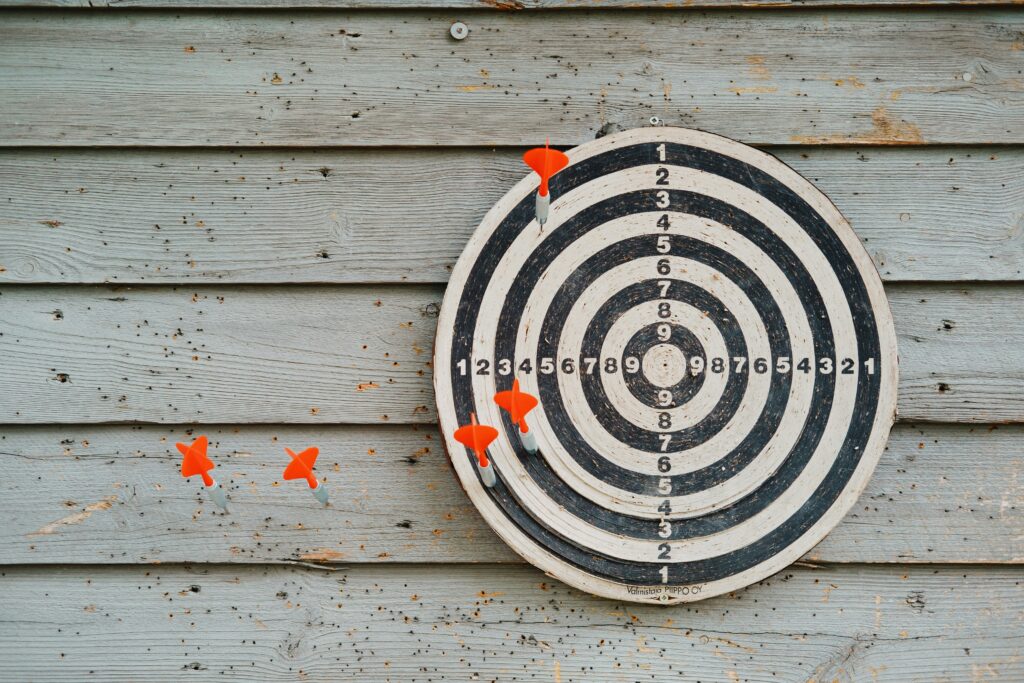Common Algorithms in Game Development
In the fascinating world of game development, algorithms are the backbone that brings action and adventure to life. Together, we can explore the essential algorithms that make our favorite games engaging and enjoyable. From pathfinding algorithms that guide characters through complex terrains to procedural generation that creates dynamic worlds, these underlying processes work seamlessly to deliver a captivating gaming experience. By understanding these common algorithms, we empower ourselves to appreciate the sheer ingenuity and creativity that goes into developing the games we love. Have you ever wondered what some of the common algorithms used in game development are? In the world of game development, algorithms play a crucial role in ensuring our games are fast, reliable, and immersive. We use algorithms to solve problems, generate content, make decisions, and create realistic behaviors. In this article, we’ll explore the most common algorithms used in game development, their applications, and why they are essential to creating the engaging gaming experiences we all adore.
Pathfinding Algorithms
Pathfinding is an integral part of game development, particularly in strategy games or any game that involves moving characters or units from one point to another. If you’ve ever directed a unit in a real-time strategy game, you’ve witnessed pathfinding in action.
A* Algorithm
The A* algorithm is one of the most popular pathfinding algorithms in game development. It provides an efficient way to find the shortest path between two points. A* combines features of Dijkstra’s Algorithm and Best-First-Search to provide the shortest and most optimal path.
How A Works:*
- Initialization: Start by adding the starting node to the open list.
- Pathfinding: Loop through the open list until it’s empty or the goal is reached.
- Neighbor Check: For each node, check its neighbors, calculate cost values (
g,h, andf). - Open/Closed List: Add nodes to the open list if they’re not already in the closed list.
- Path Construction: Once the goal is reached, construct the path from the goal back to the start using parent pointers.
| Term | Description |
|---|---|
g Cost |
Actual cost from the start node to the current node. |
h Cost |
Heuristic cost estimate from the current node to the goal. |
f Cost |
Total cost (f = g + h). |
Dijkstra’s Algorithm
Dijkstra’s algorithm is another widely used pathfinding algorithm, particularly useful for finding the shortest paths in a weighted graph. It differs from A* in that it does not use a heuristic and therefore is guaranteed to find the shortest path.
Applications:
- Best for maps where all the nodes need to be evaluated for the shortest path.
- Suitable for grid-based maps and graph-based maps.
Basic Steps:
- Initialization: Start by setting the distance of the start node to 0 and all others to infinity.
- Visit Each Node: Expand each node, calculate tentative distances to its neighbors, and update distances if a shorter path is found.
- Final Path: Reconstruct the path once the algorithm reaches the target node.
Procedural Generation Algorithms
Procedural generation allows for content creation algorithms to generate game content automatically. It’s essential for crafting vast, varied, and unique game worlds without manual creation, thus saving time and resources.
Perlin Noise
Perlin noise is a gradient noise function used to generate smooth, natural-looking textures and terrains. It is widely utilized in games to create realistic landscape textures, cloud formations, and other natural phenomena.
Why Use Perlin Noise:
- Generates smooth, continuous, pseudo-random values.
- Excellent for creating organic and natural structures.
Cellular Automata
Cellular automata are commonly used in dungeon and level generation, creating cave-like structures and environments. This algorithm operates on a grid, using simple rules to create complex structures over numerous iterations.
Steps to Generate Caves:
- Initialize Grid: Fill a grid with random values.
- Apply Rules: Apply cellular automata rules repeatedly (e.g., count the neighbors and determine states based on neighbor counts).
- Smooth Structure: After several iterations, a natural cave-like structure emerges.

AI Algorithms
Artificial Intelligence (AI) algorithms are essential for creating non-player characters (NPCs) that can exhibit intelligent behavior, offering players a challenging and authentic gaming experience. We’ll cover some common AI algorithms used in games.
Finite State Machines (FSMs)
Finite State Machines are simple yet powerful tools for modeling the behavior of NPCs. They consist of a finite number of states, transitions between states, and actions for each state.
Game Applications:
- Controlling enemy behavior (patrolling, attacking, retreating).
- Managing game entities, like doors or levers.
Model Example: Imagine an enemy character with these states: Idle, Patrol, Chase, and Attack. Transitions occur based on conditions like player proximity.
Behavior Trees
Behavior trees extend the concept of state machines by providing a hierarchical model for defining complex, nested behaviors. They are preferred in situations that require more complex and conditional sequences of actions.
Structure:
- Nodes: Each node represents a behavior or decision.
- Control Flow: Composite nodes control the execution of child nodes (e.g., selectors and sequences).
Useful For:
- Creating hierarchies of behaviors.
- Modular design, easier to debug and extend.
Neural Networks
Neural networks are employed for more complex AI behaviors, capable of learning and adapting to new situations. Although less common due to their complexity and resource requirements, they offer advanced AI capabilities.
Use Cases:
- Adaptive AI that can learn from player actions.
- Complex decision-making processes.
Collision Detection Algorithms
Collision detection is critical for ensuring realistic interactions between objects in a game world. Efficient collision detection algorithms are essential for performance, particularly in fast-paced games.
Axis-Aligned Bounding Box (AABB)
AABB is a simple and efficient collision detection algorithm suitable for detecting overlap between rectangular objects, making it ideal for 2D games.
Basic Concept:
- Check if the projections of the bounding boxes onto the x and y axes overlap.
Separating Axis Theorem (SAT)
SAT is commonly used in 2D and 3D games for collision detection between convex shapes. It checks for a separating axis between any two polygons, ensuring no overlap if such an axis exists.
Steps Involved:
- Edges to Axes: Convert edges of the polygons to potential separating axes.
- Projection: Project vertices of both polygons onto these axes.
- Overlap Test: Check if the projections overlap on all axes. If any axis has no overlap, the polygons are not colliding.
Sweep and Prune
Sweep and Prune is an efficient algorithm for broad-phase collision detection, reducing the number of necessary detailed collision checks by sorting objects along an axis and then checking for overlaps.
Process:
- Sort: Sort all objects along the chosen axis.
- Sweep: Sweep through the sorted list, keeping a list of active overlapping objects.
- Prune: Remove non-overlapping pairs from the active list.

Sorting Algorithms
Sorting algorithms organize data, which is vital for many game processes, such as rendering order, leaderboard organization, and search optimizations.
QuickSort
QuickSort is a highly efficient sorting algorithm based on the divide-and-conquer approach. It works by partitioning an array into smaller sub-arrays and sorting them individually.
Basic Steps:
- Choose Pivot: Select a pivot element from the array.
- Partition: Rearrange elements so that elements less than the pivot come before it, and those greater than the pivot come after.
- Recursive Sort: Recursively apply QuickSort to the sub-arrays.
MergeSort
MergeSort is another efficient, stable, comparison-based sorting algorithm. It divides the array into halves, sorts them, and then merges the sorted halves.
Process:
- Divide: Split the array into two halves.
- Conquer: Recursively sort each half.
- Merge: Merge the two sorted halves to produce the sorted array.
Procedural Content Generation for Levels
Creating immersive and endless levels is a challenge in game development. Procedural content generation algorithms enable the automatic generation of diverse and engaging levels.
Diamond-Square Algorithm
The Diamond-Square algorithm is used to generate realistic terrain heightmaps by iteratively applying a diamond and square step to randomize heights across a grid.
Diamond Step:
- Calculate the midpoint of each square.
- Assign a random value offset to this midpoint.
Square Step:
- Calculate the average of the diamonds connected by the midpoint.
- Assign a random value offset to this point.
Wave Function Collapse (WFC)
Wave Function Collapse is a constraint-solving algorithm that generates patterns by merging small patterns while obeying adjacency rules.
How WFC Works:
- Input Patterns: Start with a set of small patterns as input.
- Superposition: Maintain a superposition of possible patterns at each cell.
- Propagation: Propagate constraints from collapsed cells to their neighbors.
- Collapse: Reduce superpositions until only one pattern remains per cell, adhering to constraints.

Optimization Algorithms
Game development often requires optimization to ensure games run smoothly on various hardware configurations. Optimization algorithms help us improve performance and resource usage.
LOD (Level of Detail)
LOD techniques dynamically adjust the complexity of 3D models based on their distance from the camera. This optimizes rendering performance by simplifying distant objects.
Applications:
- 3D Mesh Simplification
- Texture Resolution Reduction
Occlusion Culling
Occlusion culling improves performance by not rendering objects that are blocked by other objects from the camera’s viewpoint.
Techniques:
- Portal Culling: Divides the scene into cells and portals for visibility checks.
- Occlusion Queries: Hardware-based queries to determine if objects are occluded.
Conclusion
Understanding and utilizing the right algorithms is crucial for successful game development. From pathfinding and procedural generation to AI and optimization, these algorithms help create immersive, efficient, and engaging gaming experiences. By leveraging these core algorithms, we can solve complex problems, enhance game performance, and bring our imaginative worlds to life.
If you’ve made it this far, congratulations! You now have a deeper insight into the common algorithms used in game development. Whether you’re a seasoned developer or just starting, mastering these algorithms will undoubtedly elevate your game development skills. Happy coding, and may your games be ever engaging and fun!




